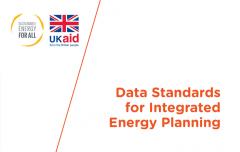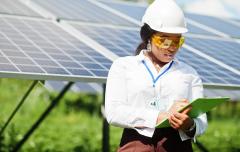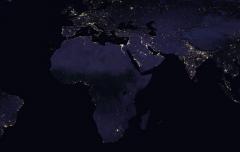New Malawi Integrated Energy Planning Tool provides critical insights to advance energy access
On 19 October, the Government of Malawi, SEforALL and the Global Energy Alliance for People and Planet launched the Malawi Integrated Energy Planning Tool, an online, publicly available, interactive data visualization platform to share the results of Malawi’s Integrated Energy Plan (IEP). The tool equips Malawian policy makers and energy practitioners with data and insights to make informed decisions to advance energy access in the country.
Integrated energy planning is crucial to achieving universal energy access as called for by Sustainable Development Goal 7 (SDG7) by 2030. A comprehensive IEP that uses geospatial data and modelling helps identify energy resources using a dynamic, data-driven approach to optimize the mix of technologies and investment to achieve universal energy access. This offers significant economic impact while achieving cost and resource savings.
The Malawi Integrated Energy Planning Tool is an exemplar of a world-class IEP. While traditional energy plans focus primarily on electrification, the Malawi IEP includes electrification and clean cooking. For the first time, it also includes refrigeration and storage requirements for vaccine distribution for the entire country.
“I am grateful to the Government of Malawi for their partnership with Sustainable Energy for All and for their commitment towards translating their ambition for achieving SDG7 into real action on the ground," said Damilola Ogunbiyi, CEO and Special Representative of the UN Secretary General for Sustainable Energy for All. "Having a comprehensive Integrated Energy Plan which makes use of geospatial data and modelling, can provide optimized, dynamic, and data-driven ways of identifying the mix of technologies and spending required to achieve universal energy access.”
Key insights highlighted by the Malawi’s Integrated Energy Planning Tool include:
- The least-cost plan for universal electrification through grid, mini-grid and solar home systems will require USD 3.6 billion in investment.
- There is potential for 4.7 million households in rural areas to use improved firewood cookstoves and 946,000 households in urban areas using improved cookstoves and modern energy services to meet the Malawi SDG7 Cleaner Cooking Energy Compact.
- Based on latest data, there are 186 off-grid health facilities in Malawi. Converting these off-grid facilities to standalone energy service will require an investment of USD 3.6 million.
The Malawi IEP was revealed at an event in Lilongwe, Malawi where the Global Energy Alliance for People and Planet (GEAPP) launched the ‘Scaling Renewables in Malawi to Underpin Development’ energy programme to assist Malawi in achieving universal access by 2030.
Joseph Nganga, Vice President for GEAPP stated, “Integrated energy planning is crucial to achieving universal energy access. We are thrilled to support the launch of Malawi’s energy programme and are committed to working together to scale clean energy for the people of Malawi.”
The Malawi Integrated Energy Planning Tool is available here.



